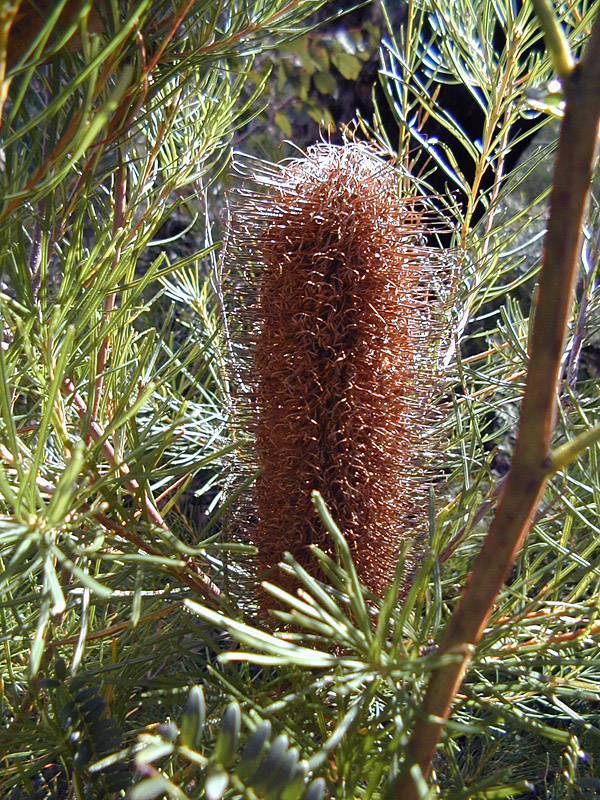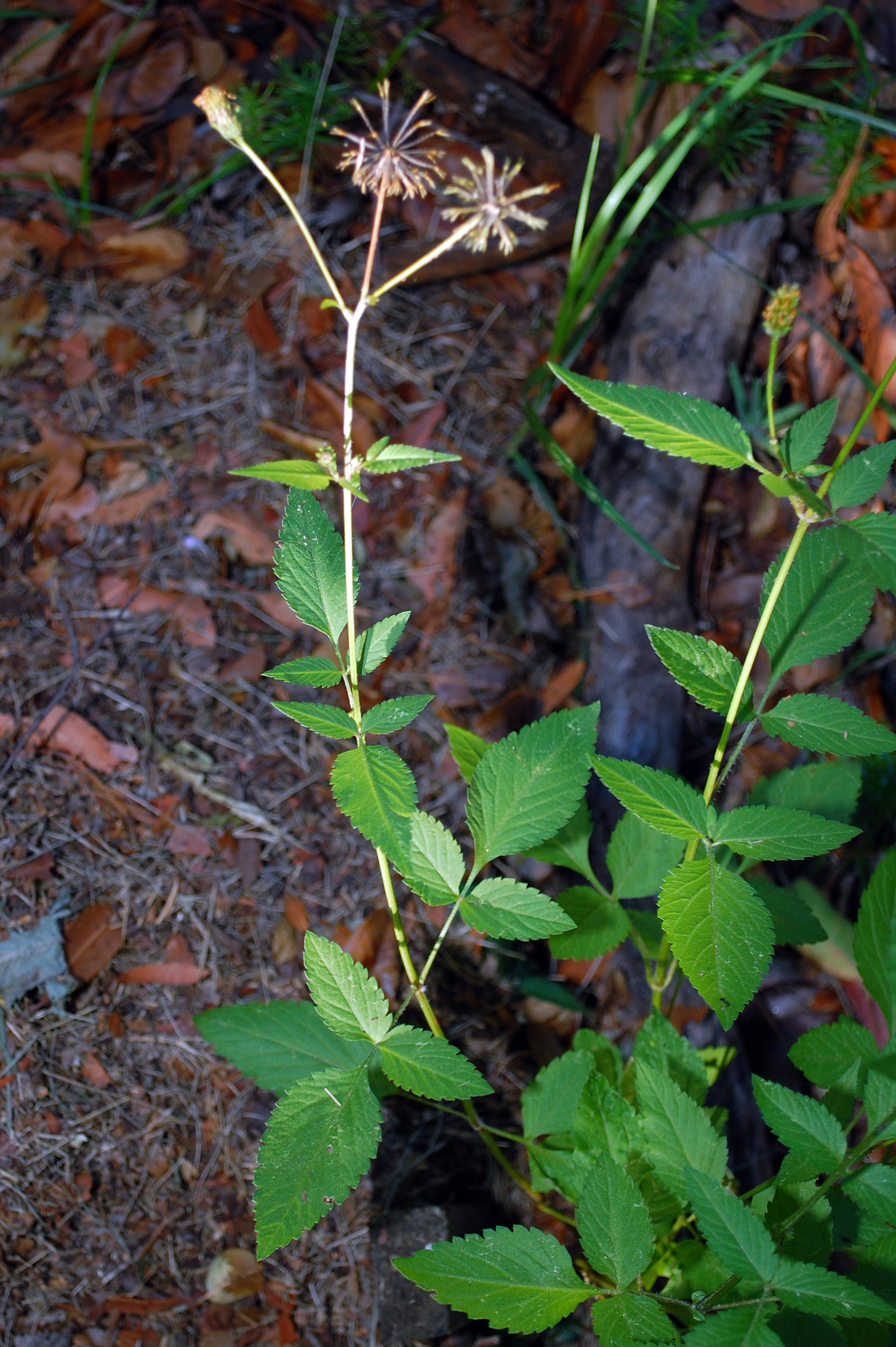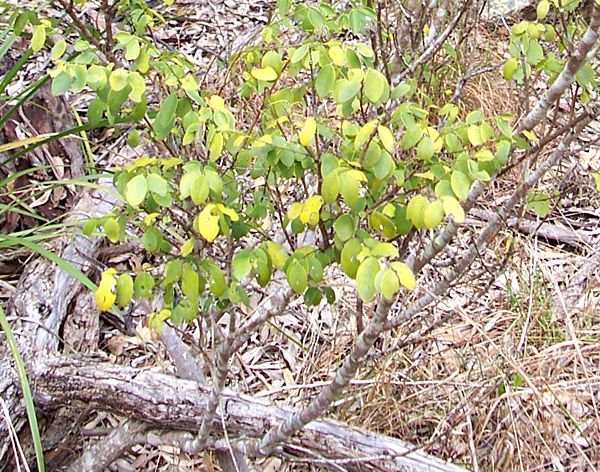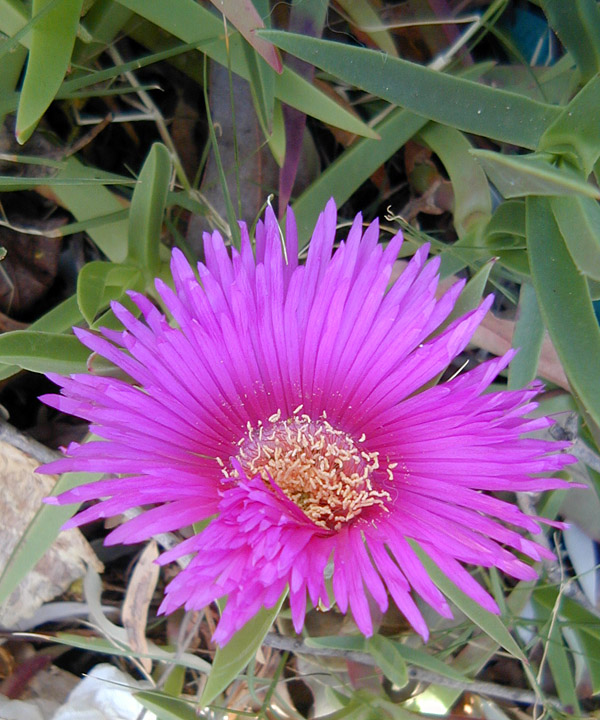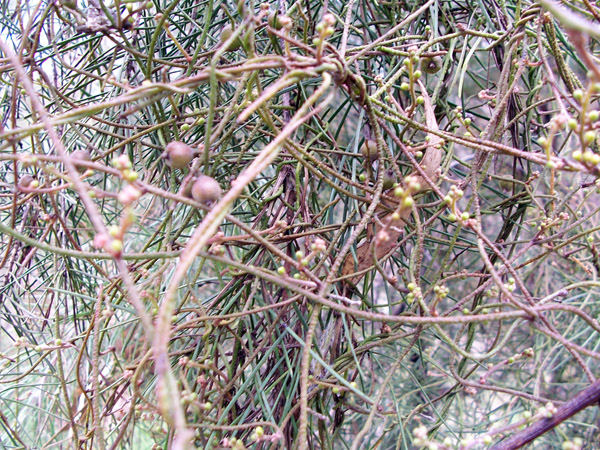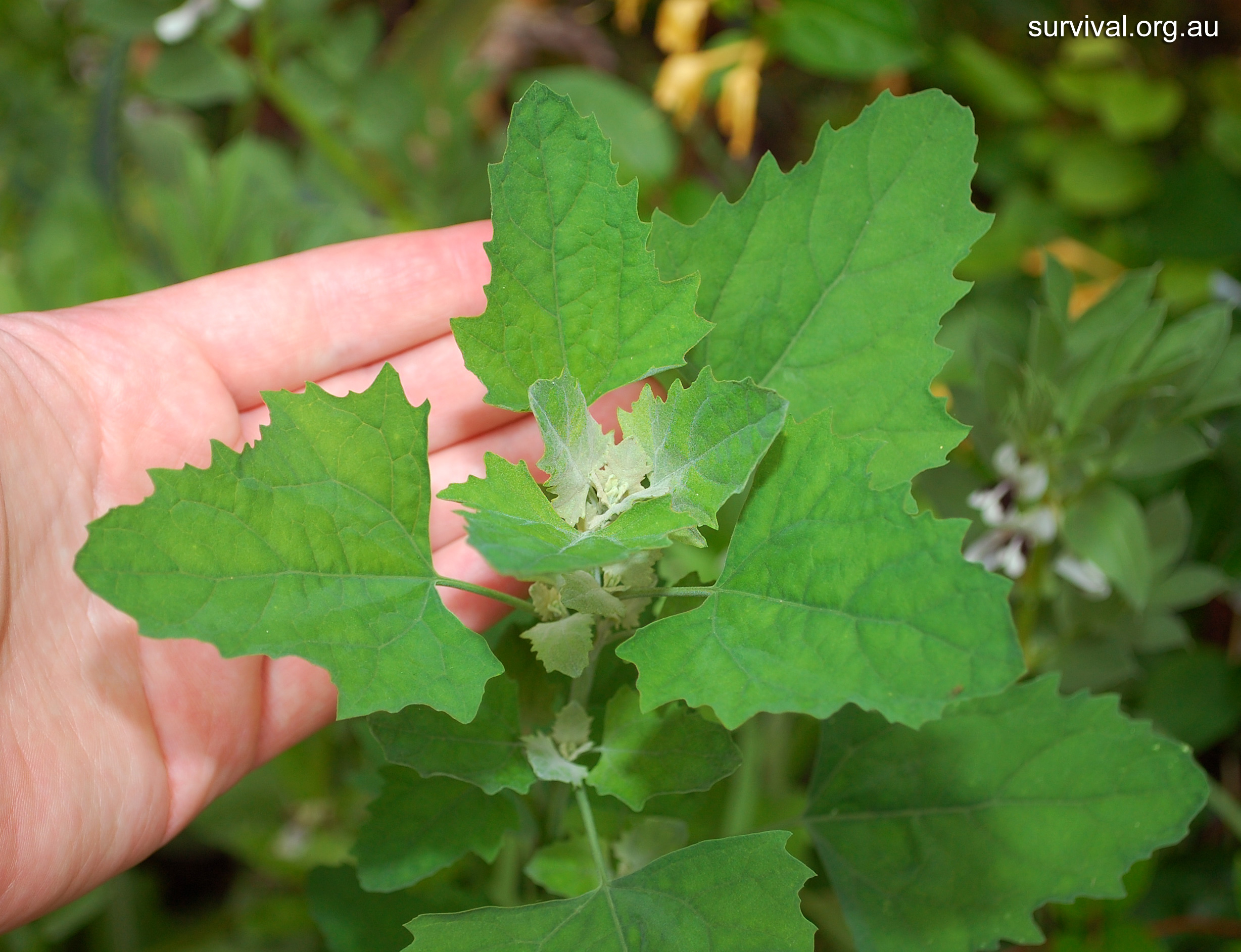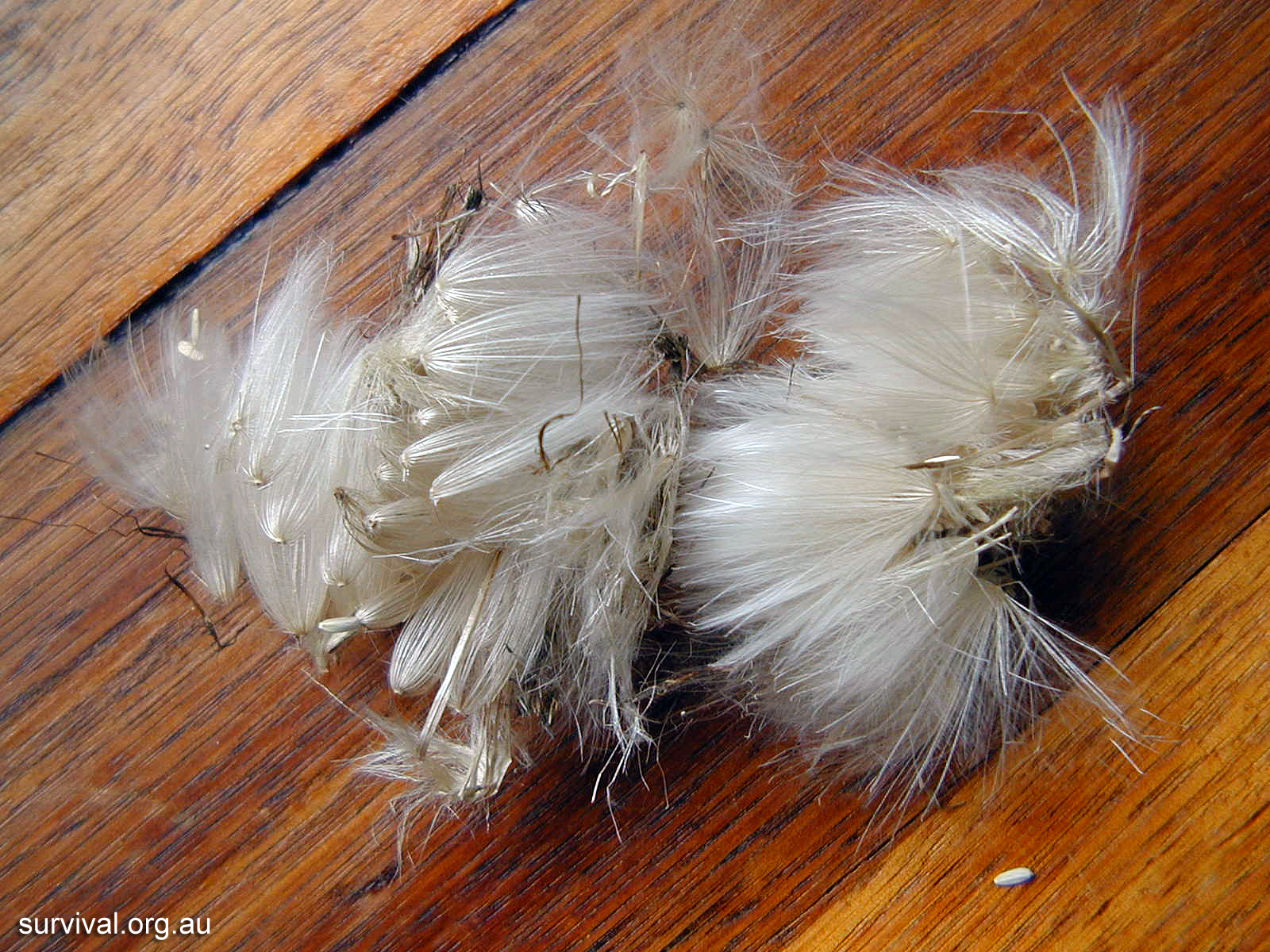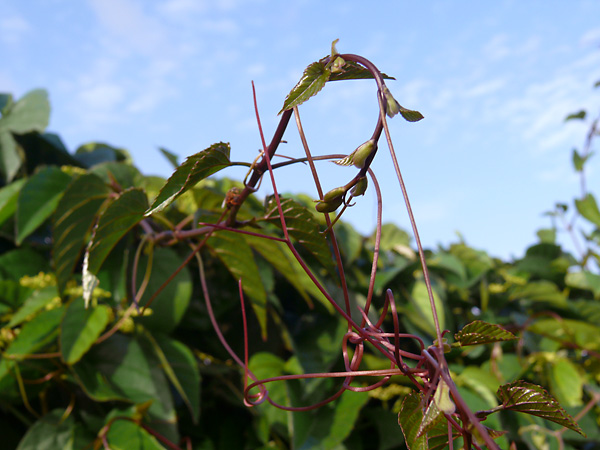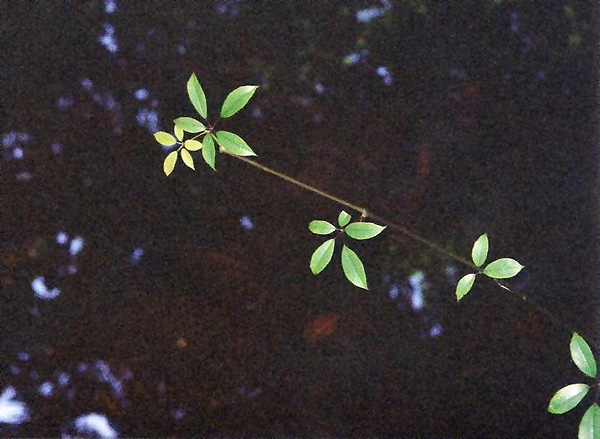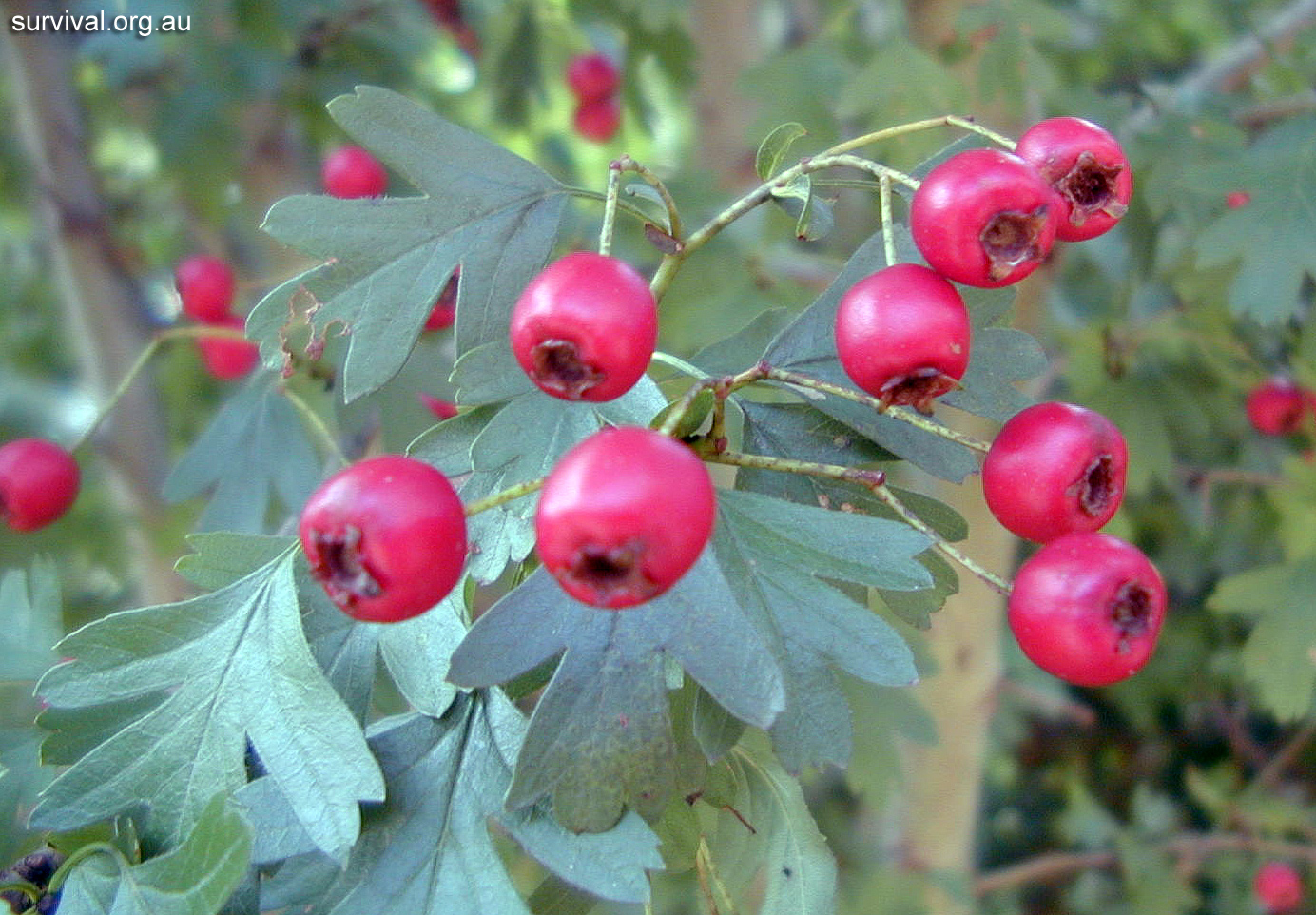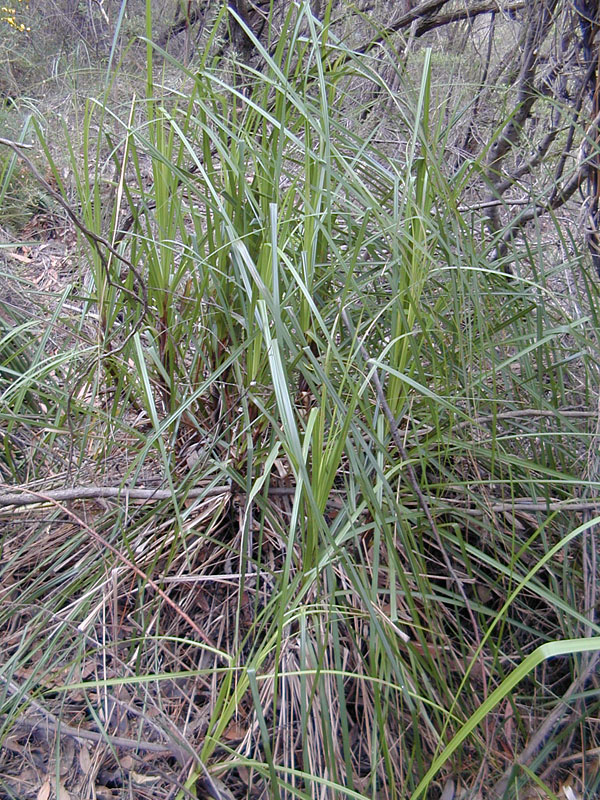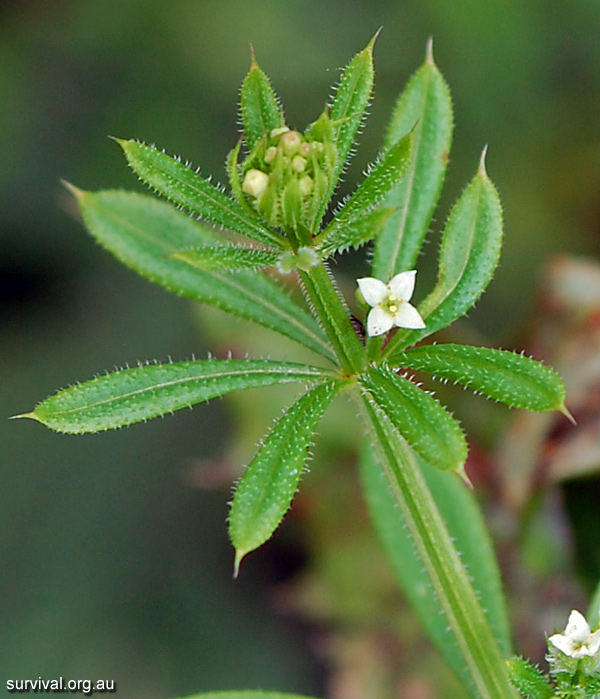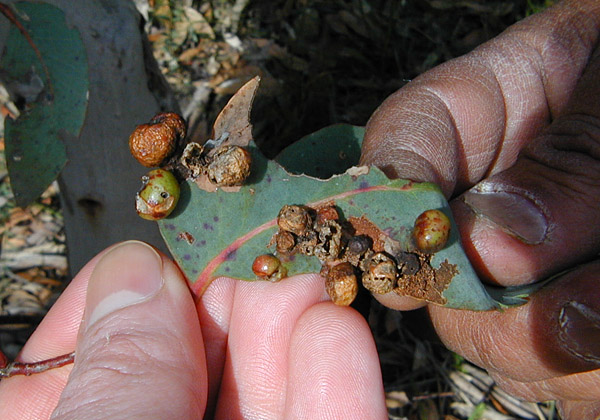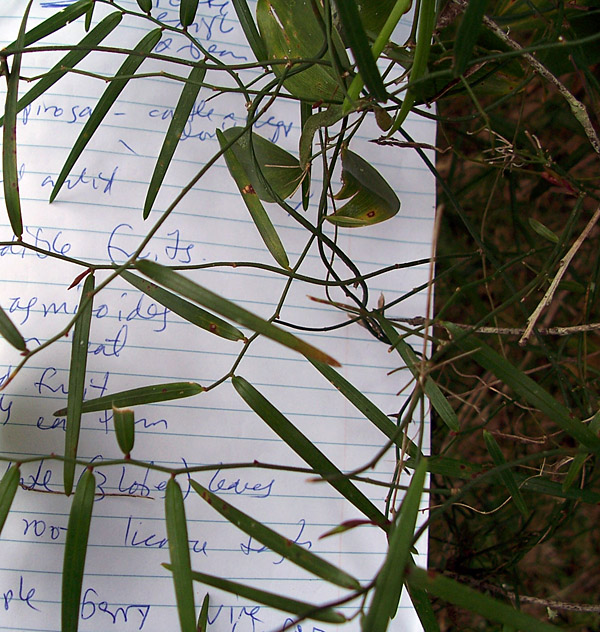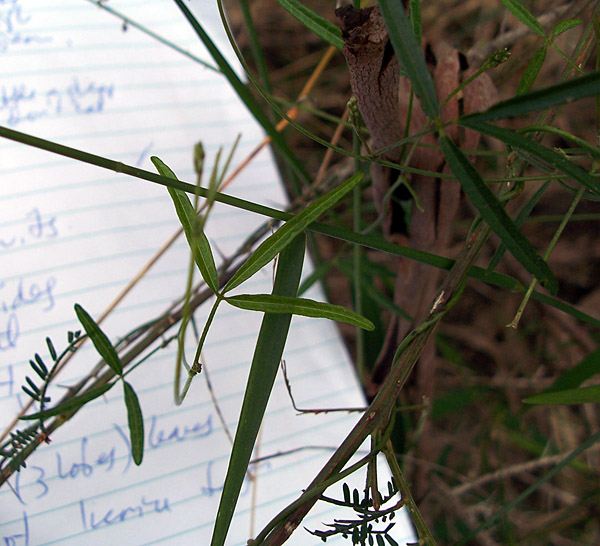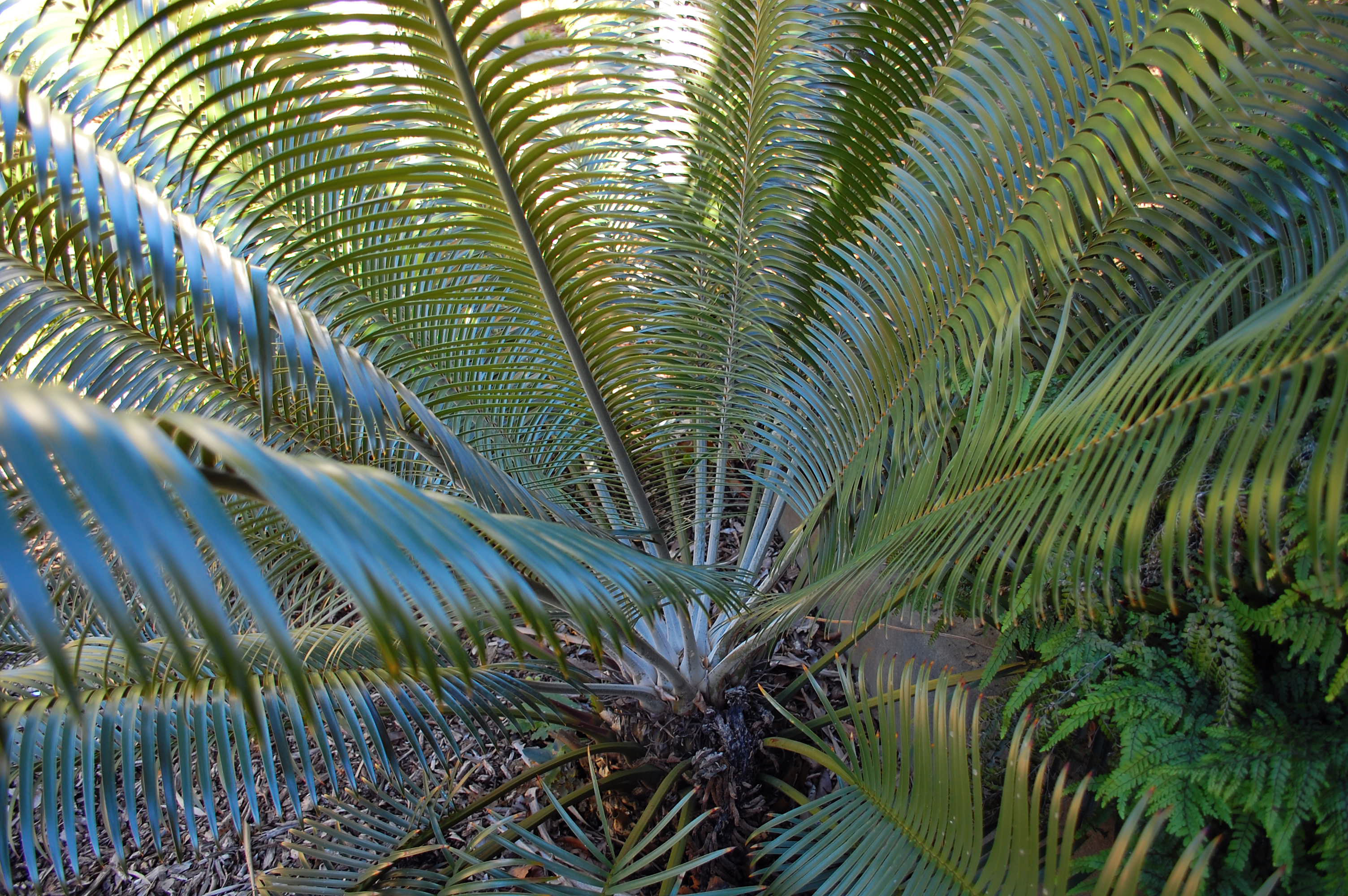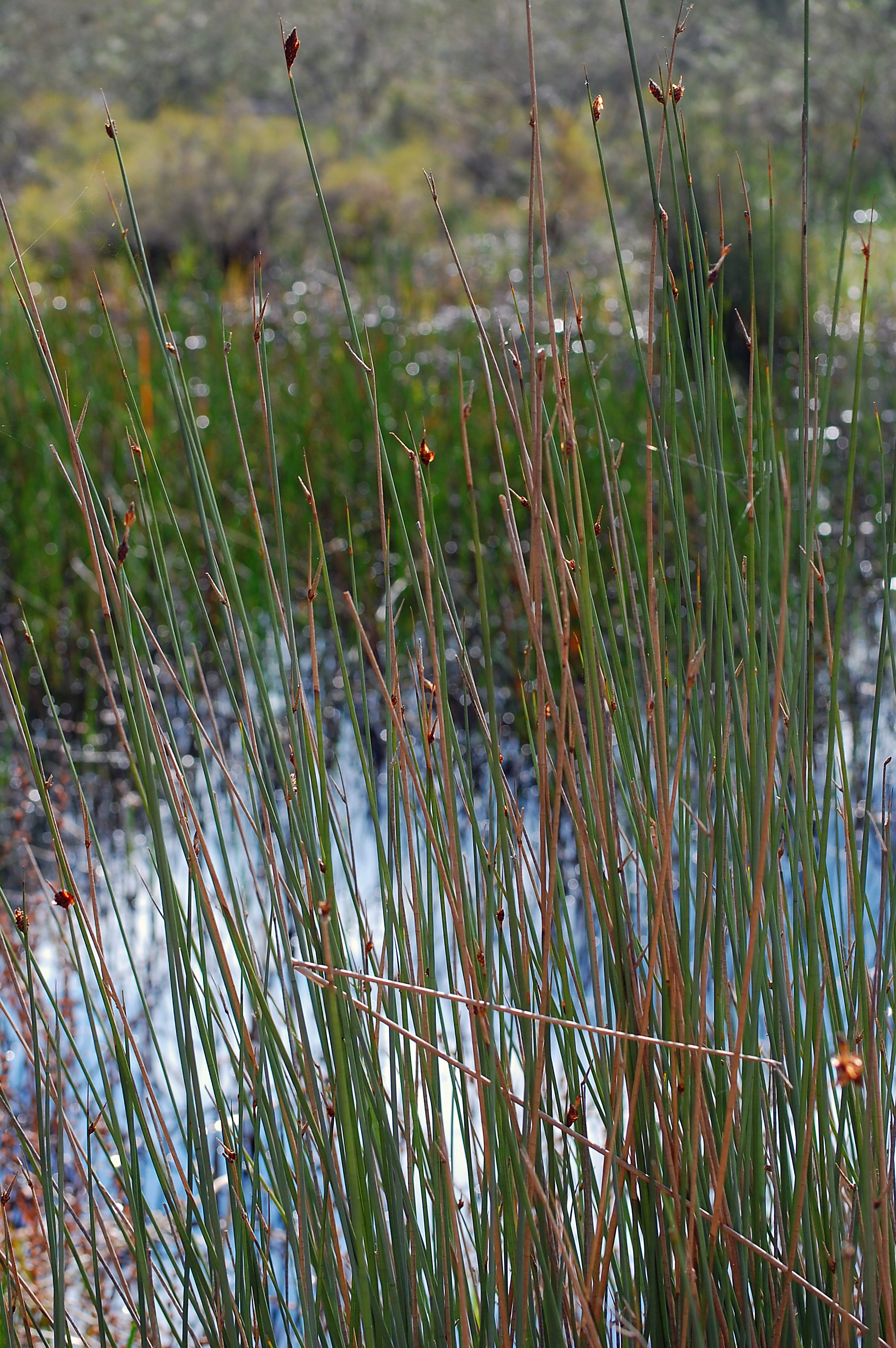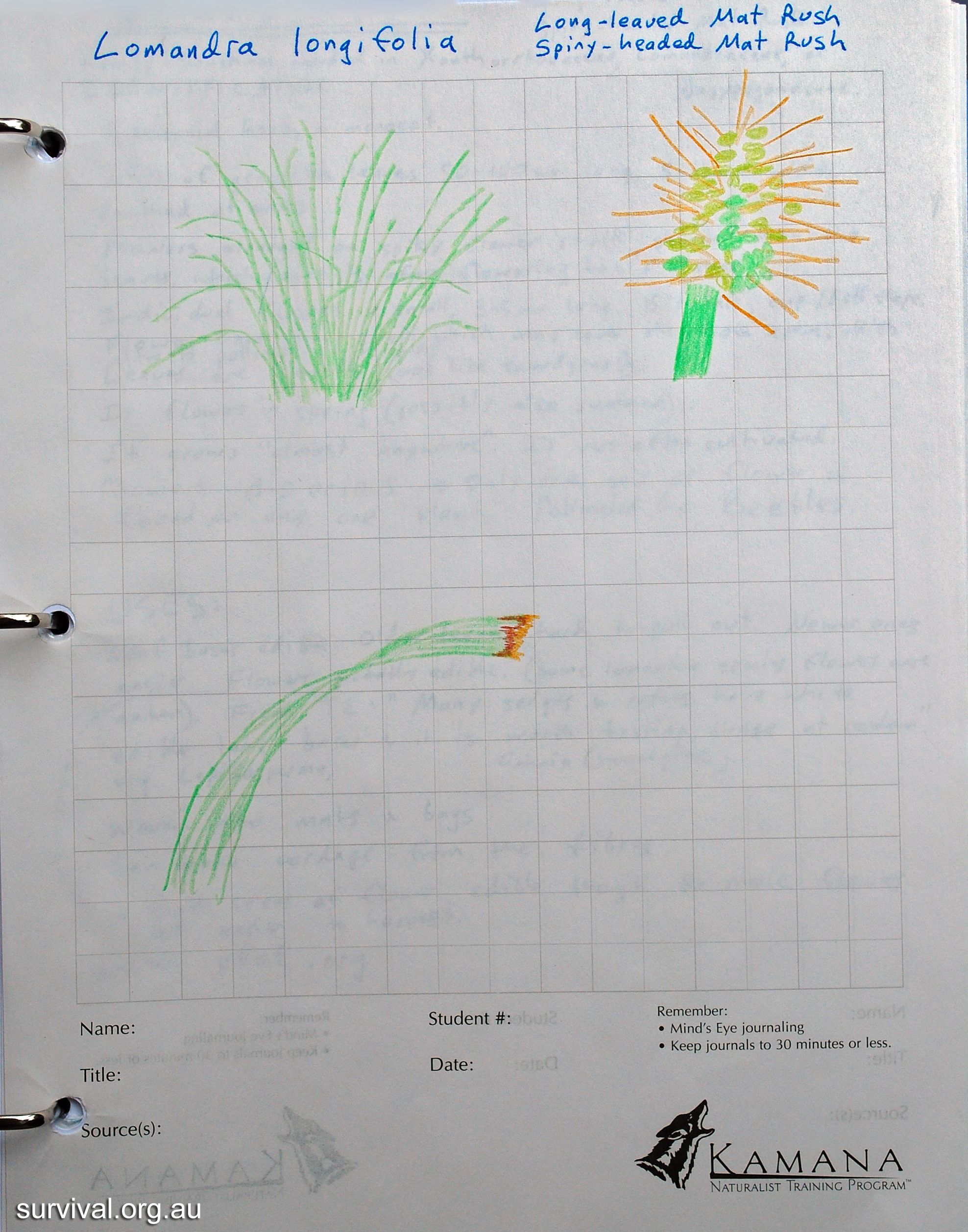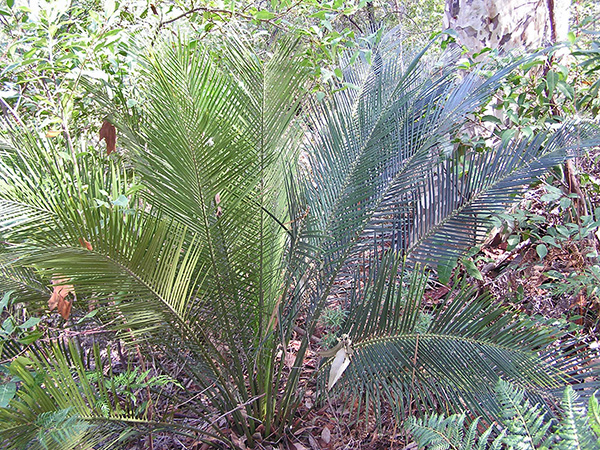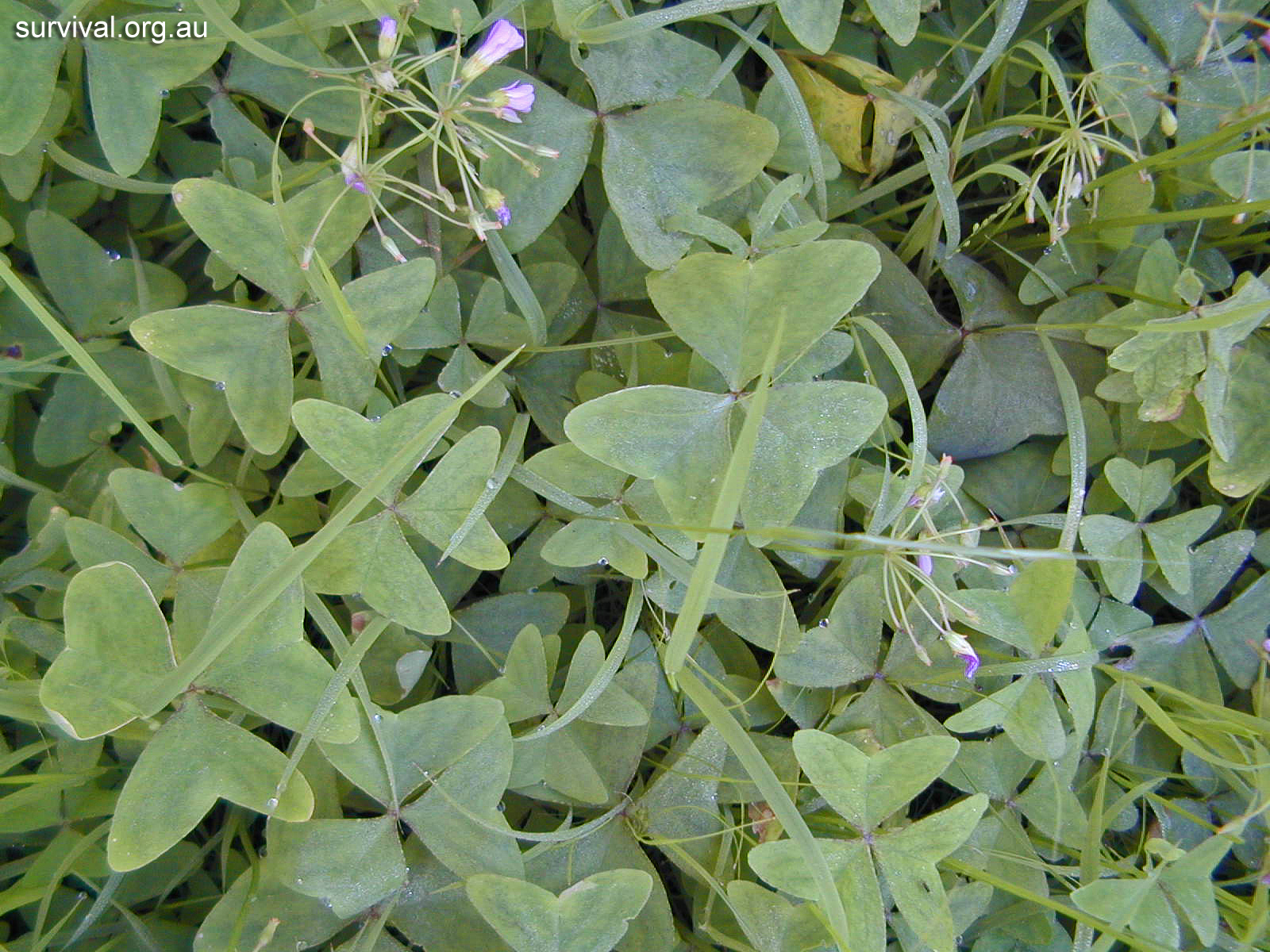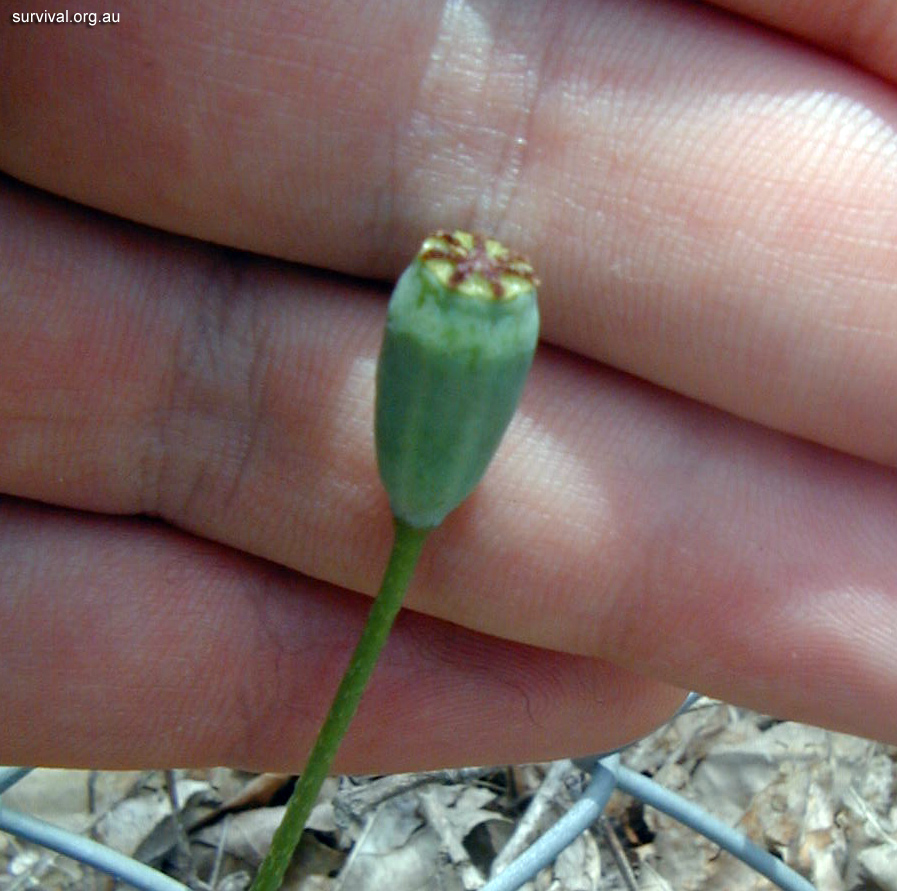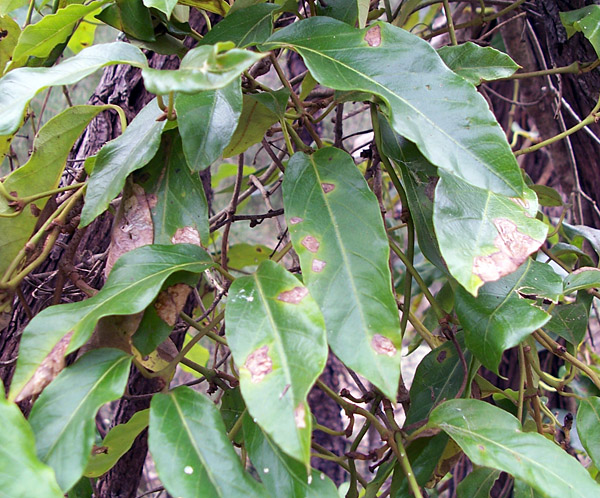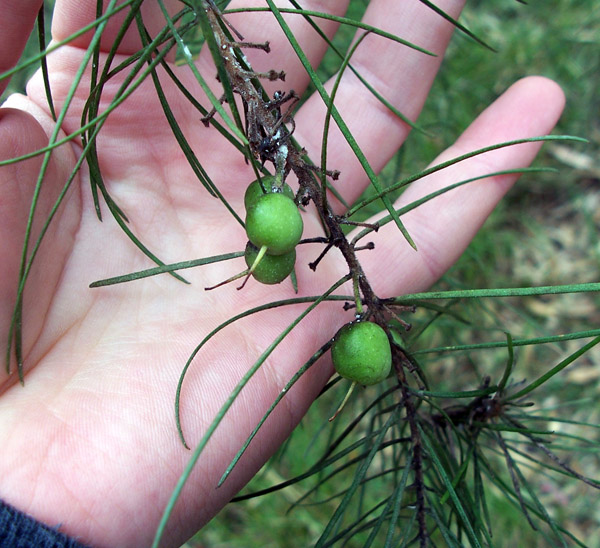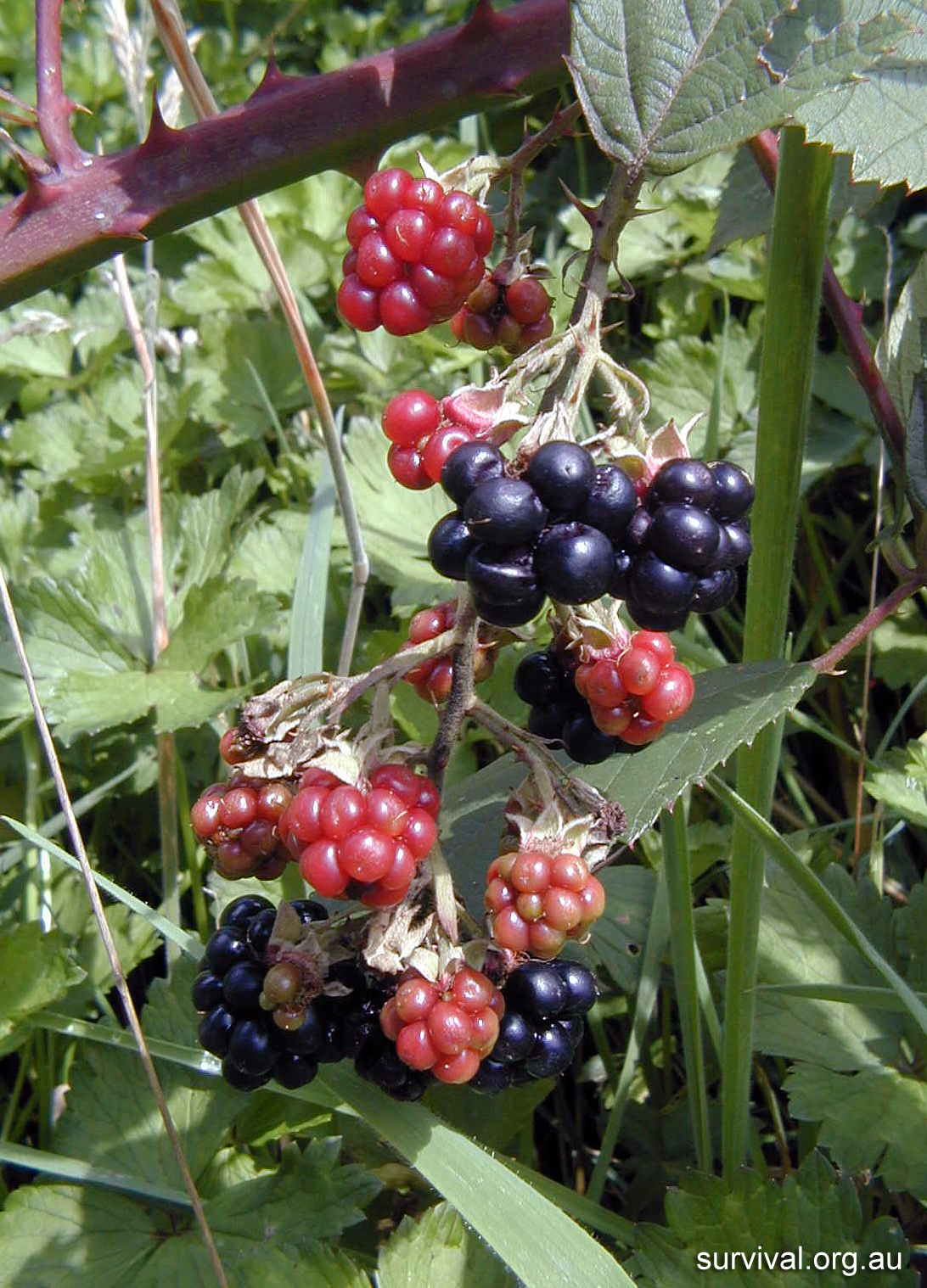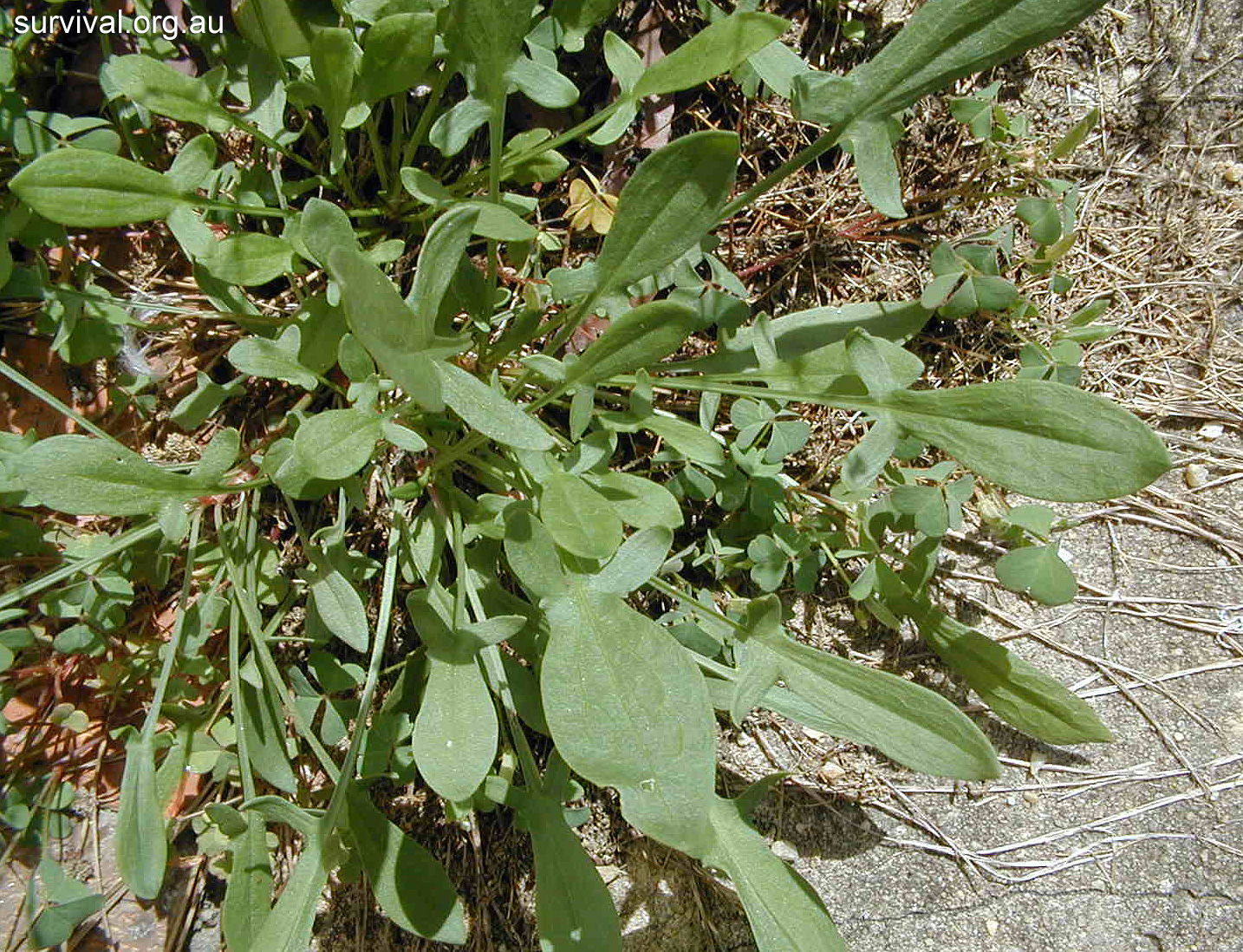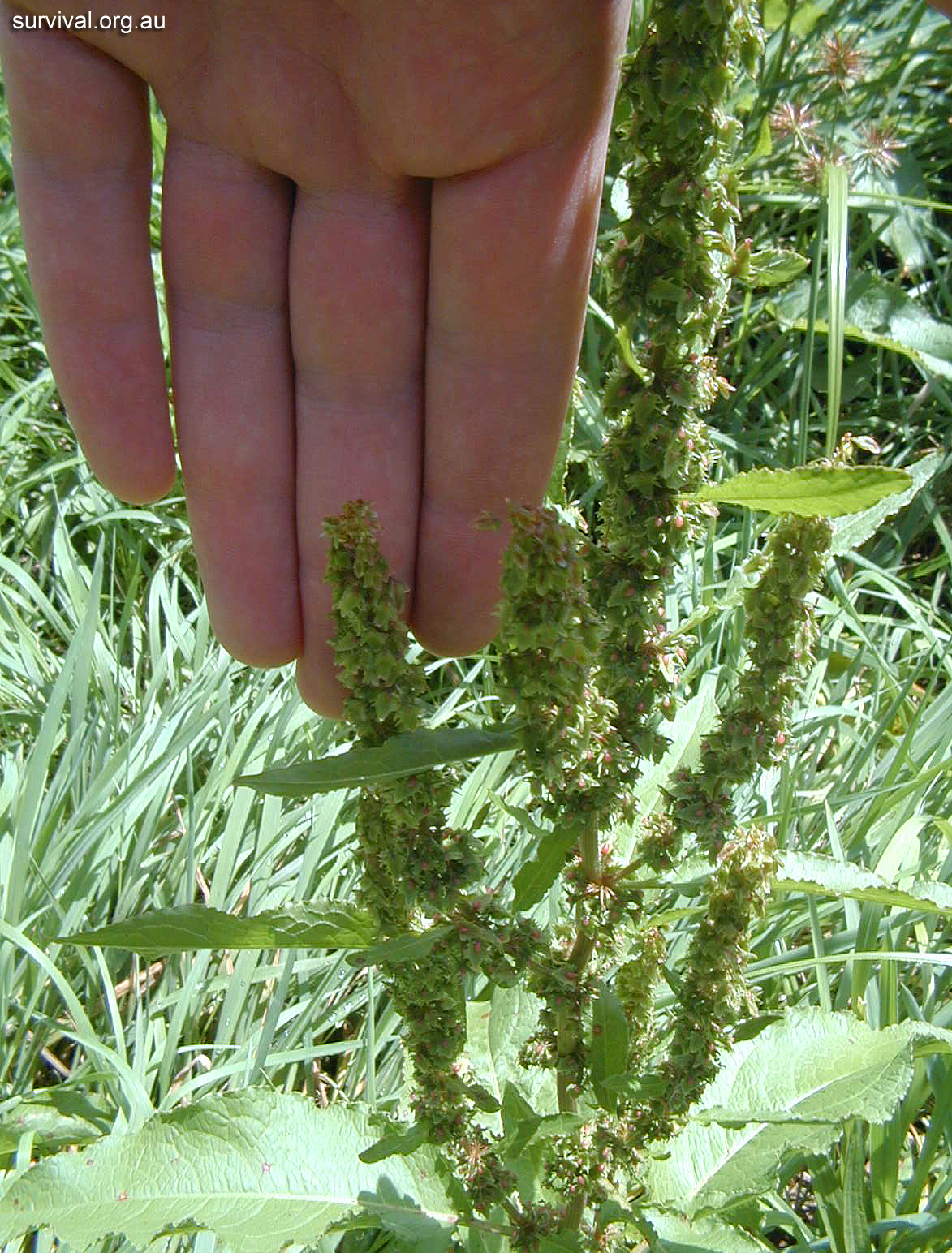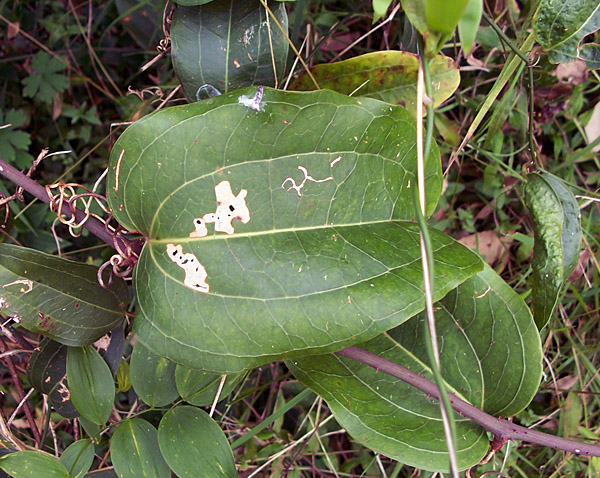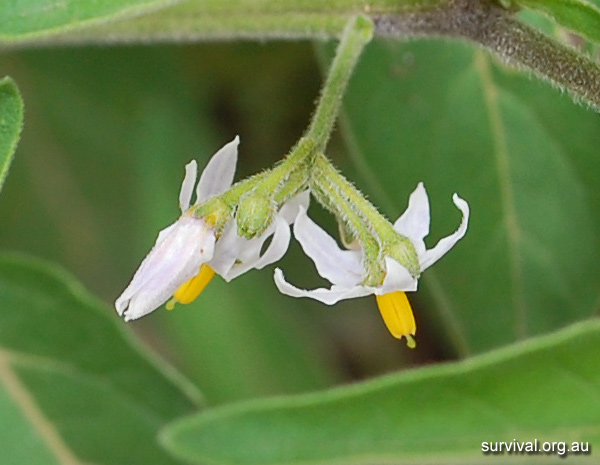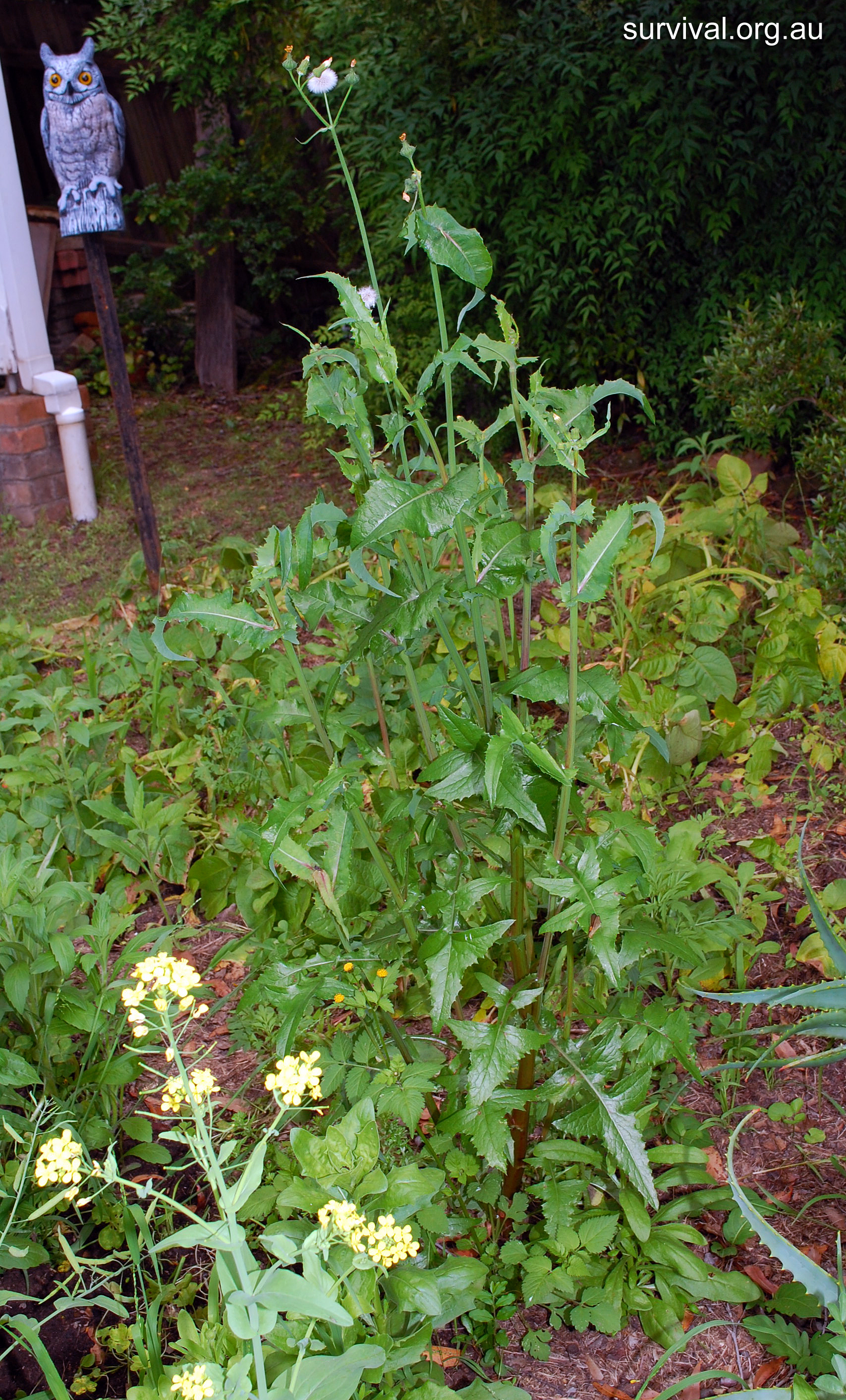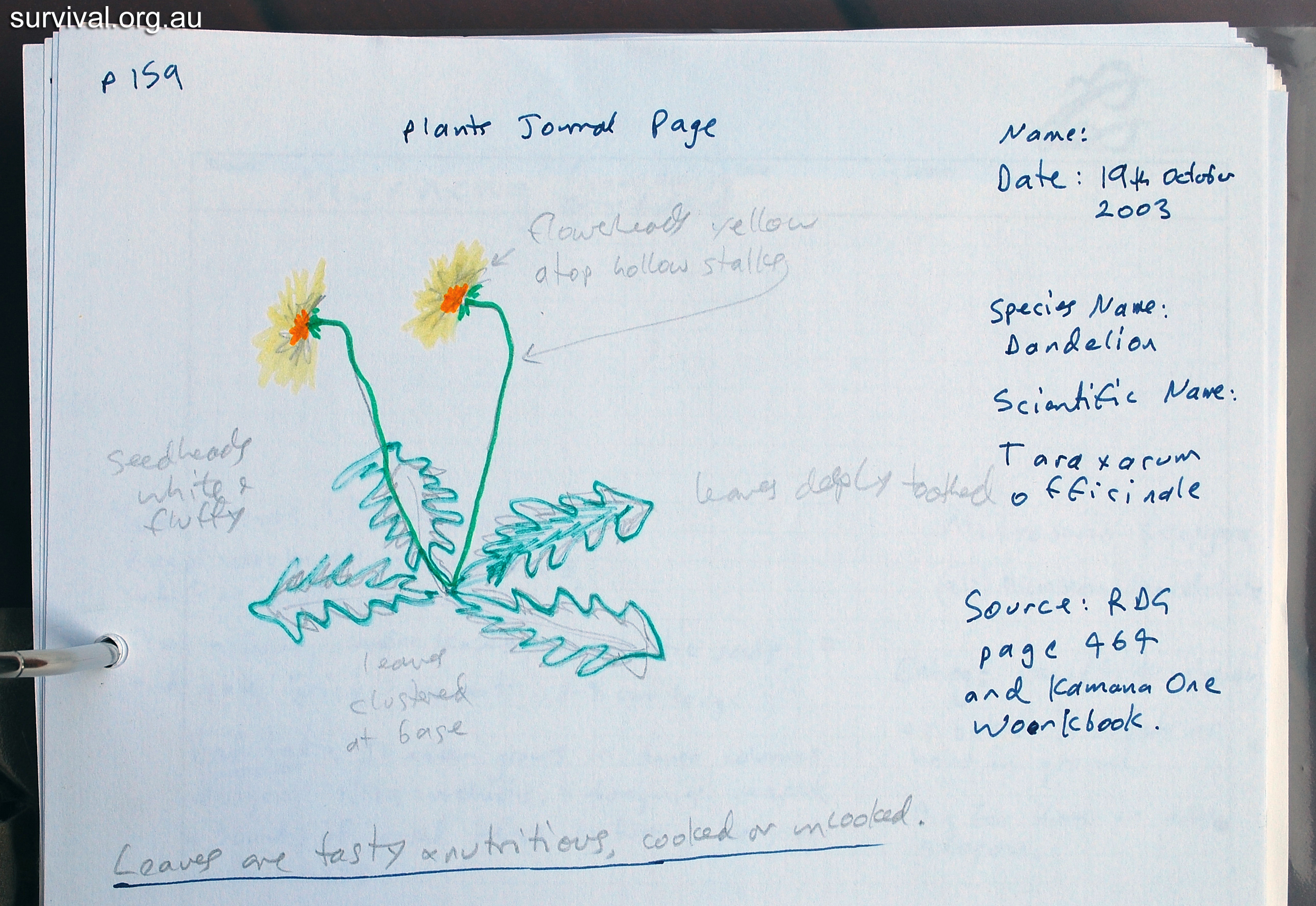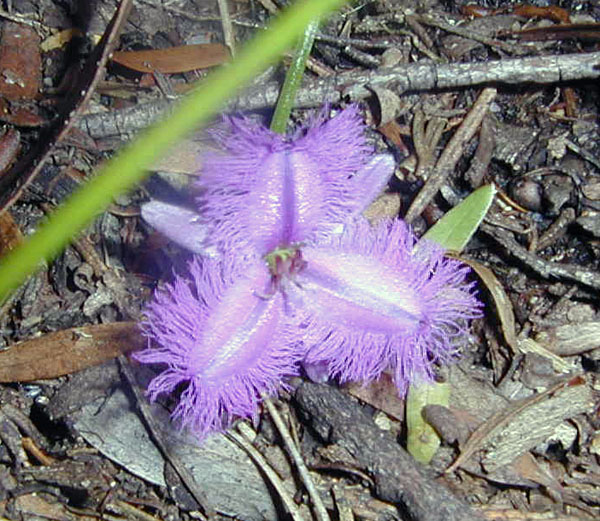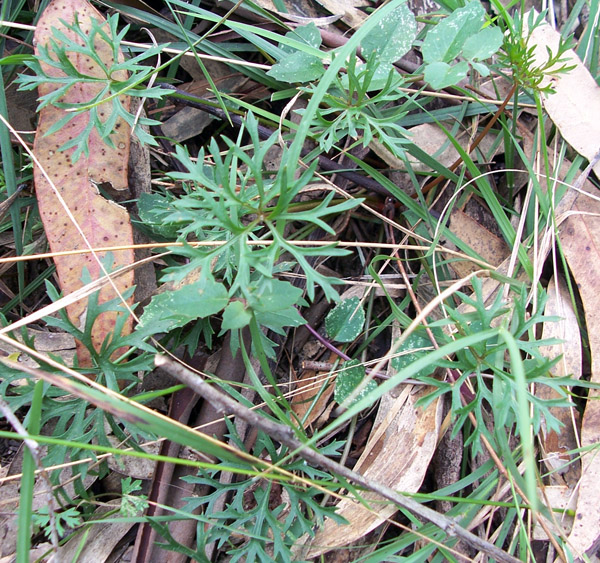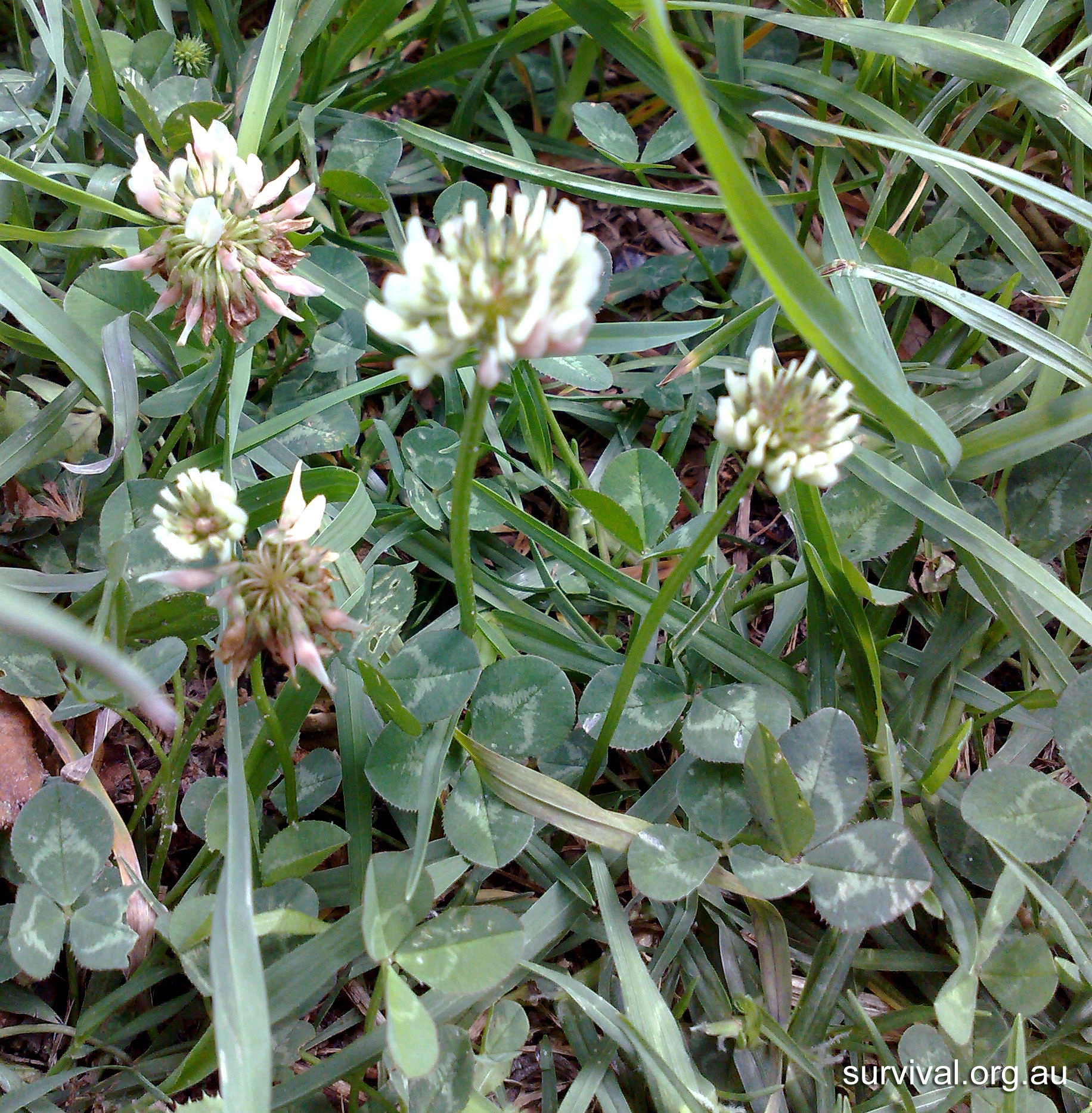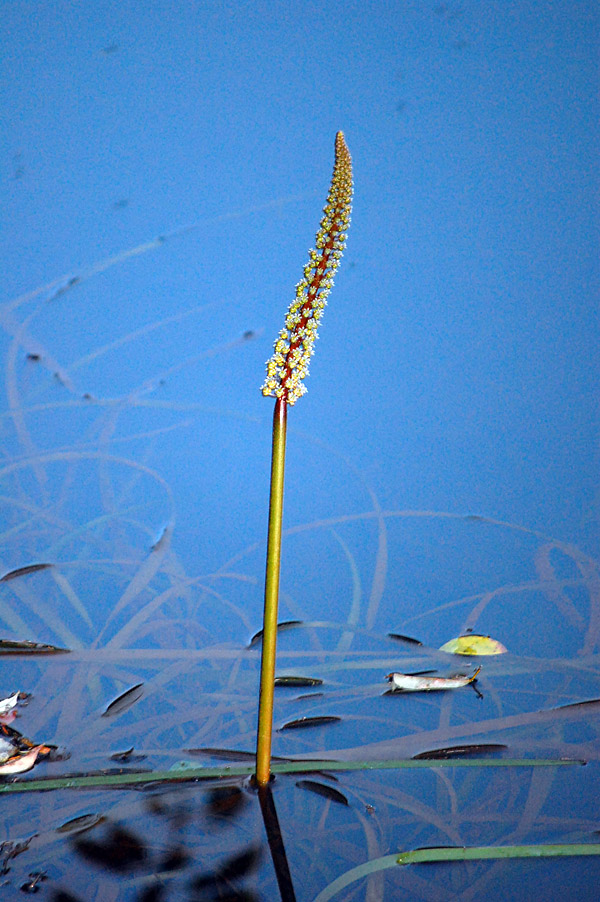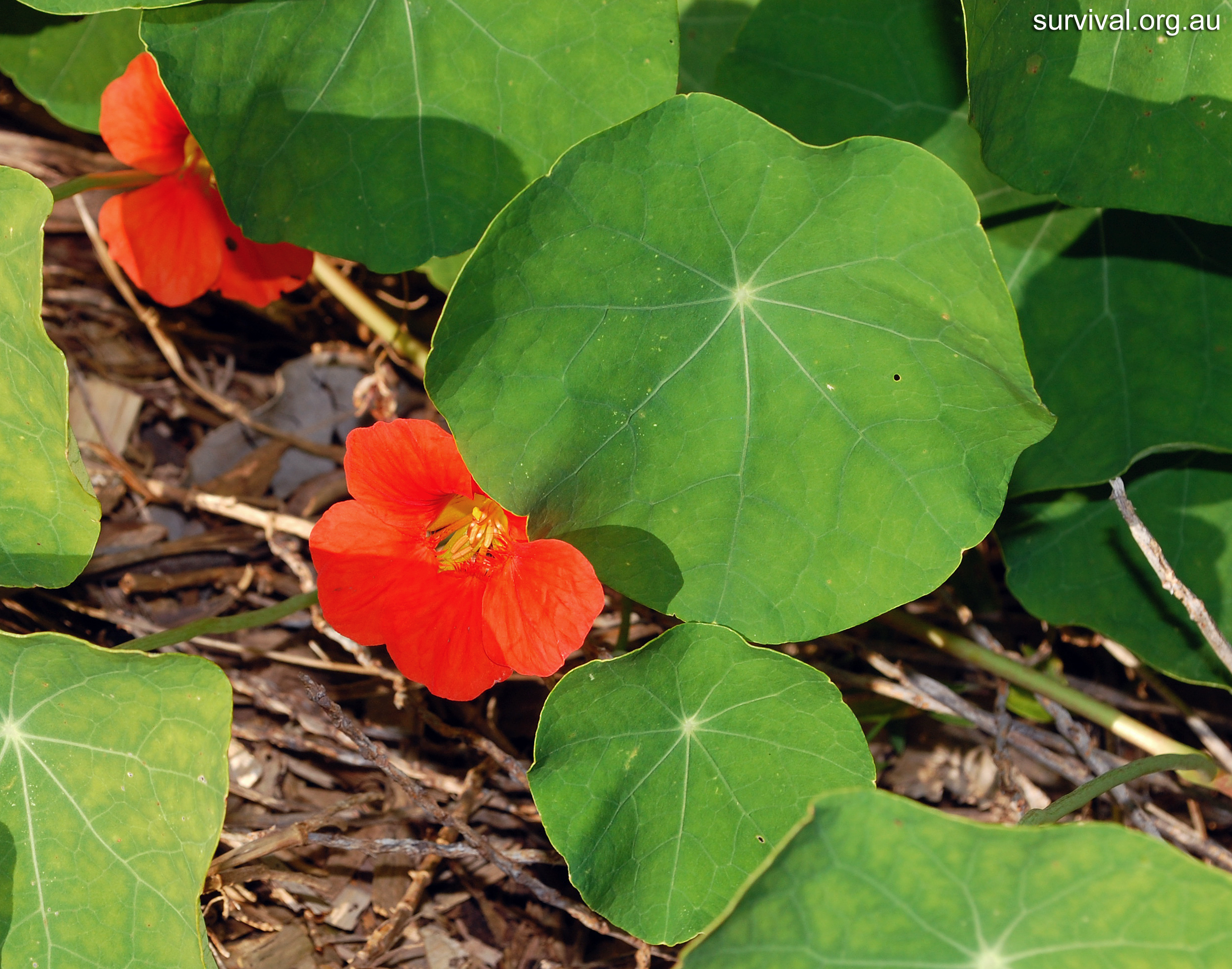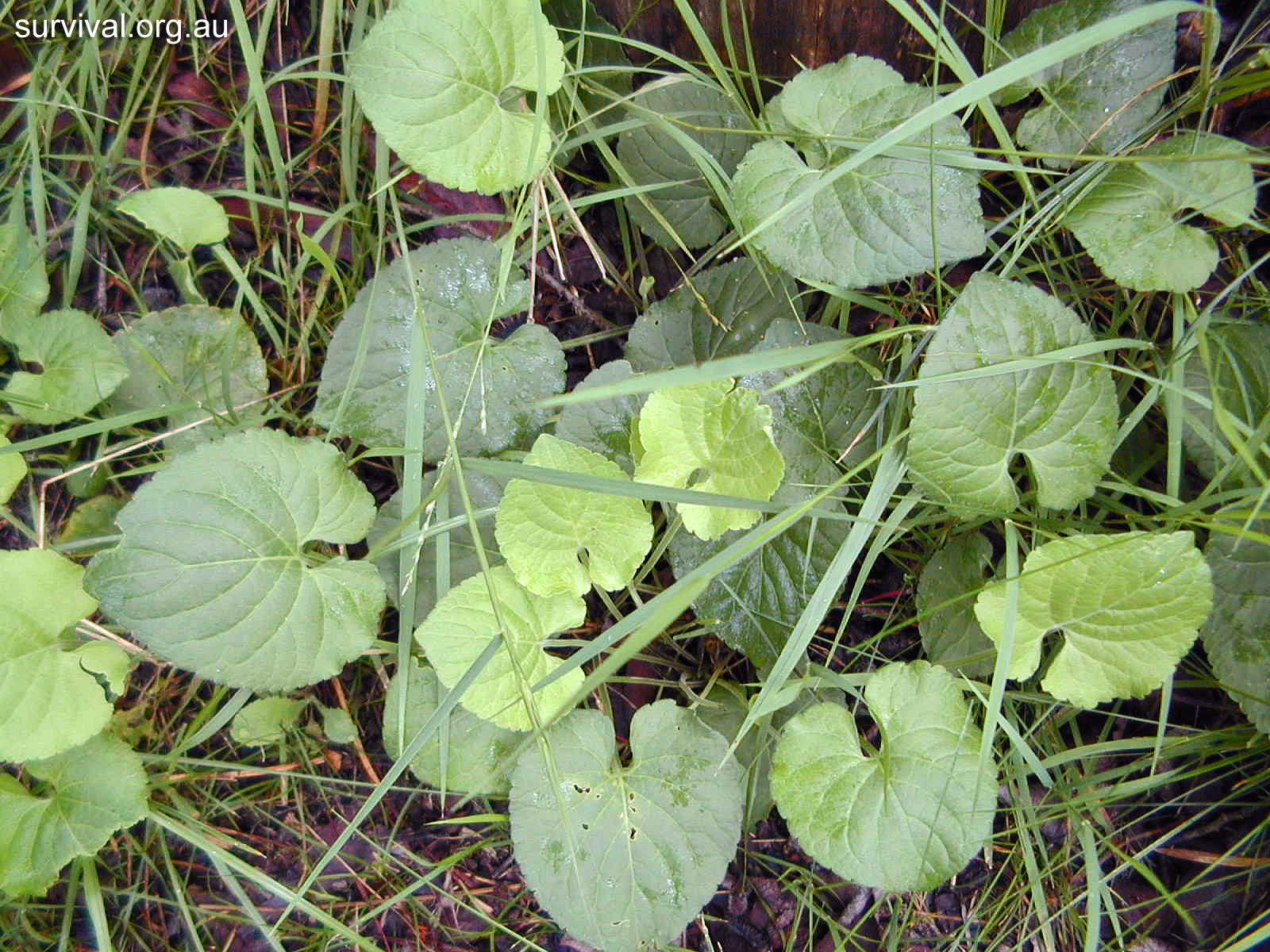![]() WARNING: Never eat
plants that are growing in an area where they may have been sprayed
with pesticides or herbicides (weed killers), or where the water
supply to the area could be polluted, such as from urban or industrial
run-off. Never eat any part of any wild growing plant unless you are certain you can identify it. Being certain means you have developed a maturity of skill in identifying plants. It does not mean you are pretty sure it looks just like "that plant you saw once on some website".
WARNING: Never eat
plants that are growing in an area where they may have been sprayed
with pesticides or herbicides (weed killers), or where the water
supply to the area could be polluted, such as from urban or industrial
run-off. Never eat any part of any wild growing plant unless you are certain you can identify it. Being certain means you have developed a maturity of skill in identifying plants. It does not mean you are pretty sure it looks just like "that plant you saw once on some website".
The Aboriginies in and around Sydney used the seeds of at least three species, Acacia longifolia (Sydney Golden Wattle), Acacia sophorae (Coastal Wattle), and Acacia suaveolens (Sweet Wattle). These were eaten "green" after steaming rather...
According to Tim Low, no-one seems to realise this represents one of the best available sources of wild greens. In Java it is sometimes cultivated as a vegetable. It used to be in the ...
Mistletoes are parasitic shrubs that draw part of their nourishment from the host tree that they grow on. The fruits are edible by humans and birds, including the mistletoe bird which helps spread the plant...
Banksia is distinguished from other Proteaceae by the dense flower spikes and distinctive woody follicles. ...
Banksia is distinguished from other Proteaceae by the dense flower spikes and distinctive woody follicles. ...
Bidens pilosa, Cobbler's Pegs or Farmer's Friends, is a well known weed in the East of Australia. The seeds have a burr that sticks on to your clothing, so that if you brush against...
Small twining creepers. The small cylindrical or egg-shaped berries have many tiny seeds. There are about 20 species of Billardiera in Australia, some of the others are also edible....
An erect shrub 2-3m high with greyish-green leaves and red branchlets, common in rainforest margin and moist gullies, including creek beds on the Cumberland plain. The pendant fruits resemble tiny apples, and turn red when...
Slender annual grass, grows to 60cm high.
The grass family, Poaceae, contains about 650 genera (with 250 in Australia) and 9500 species worldwide. Most grass seeds...
These are ground or terrestrial orchids (as opposed to tree or epiphytic orchids which grow on other plants). Caladenia catenata (White Fingers) is the most common Caladenia in the Sydney area. It is very similar...
A robust creeping herb with succulent (like a cactus) leaves. The fruits are good eating, among Australia's tastiest wild fruits. They turn purple when ripe, and the fleshy pulp can be squeezed out and...
These are twining shrubs that are parasitic on the plants they grow on, forming such a mass that the host eventually collapses. There are 14 species in Australia. C. paniculata is found in Cattai...
Chenopodium album, Fat Hen, is probably named because chickens get fat from eating it. It has been used as a vegetable in Europe since prehistoric times. It grows faster and absorbs nutrients more efficiently than...
Spear Thistle (Cirsium vulgare) is the most common of the Cirsium species in Australia and New Zealand. Tim Low says that they are a most fine vegetable and a good introduction to eating weeds. Also...
According to Tim Low not all species of Vitacea (native grapes) are edible. The two species of Cissus shown here are known to be edible. Cissus opaca (Pepper vine) fruits are also edible and this...
According to Tim Low not all species of Vitacea (native grapes) are edible. The two species of Cissus shown here are known to be edible. Cissus opaca (Pepper vine) fruits are also edible and this...
Commelina cyanea (Scurvy Weed) leaves were eaten by the first white settlers in Australia, to alleviate scurvy from lack of vitamin C. There are lots of references all over the internet to Commelina cyanea being...
The name "haw" comes from the old English plant for hedge. It was introduced to Australia as a hedge plant. They have large, sharp thorns so be careful! Some people say that hawthorn stems...
A wiry vine which trails over low branches or across the ground. A common vine of open forests, extending into dry woodlands and rainforest. It can be mistaken for the very similar Geitonoplesium cymosum...
Small trees with drooping, leafless stems resembling a she-oak (Casuarina spp.) or cypress pine....
A straggly, small tree common on creek beds in subtropical rainforest. The leaves are so rough they can be used as sandpaper, to polish timber and even ivory or bone. Each species of fig is...
Fennel is an ancient herb, used mainly for flavourings. The leaves, stems, and seeds and roots may all be eaten, raw or cooked....
A genus of large, leafy sedges that form tussocks. The sharply serrated leaves are a distinguishing feature. The leaf bases contain edible starch, however the leaves are very sharp and can be difficult to harvest....
Cleavers is and easy weed to learn to identify, due to the distinctive shape of the leaves growing out from the stems. It has tiny white flowers with four petals (see the third photo below...
Galls are the result of insect activity, so technically they are not a plant food, but an animal food. The insect larvae (young) develop inside the gall, and they leave when they reach adulthood. Many...
A climber. The shoots may be boiled and eaten, and have been compared to asparagus. The black berries are inedible. Resembles Eustrephus latifolius (Wombat berry), though the leaves of Geitonoplesium are usually thinner....
These are ground or terrestrial orchids (as opposed to tree or epiphytic orchids which grow on other plants).
All ground orchids produce tubers, which were roasted or eaten raw by...
A slender trailer (not climbing), found in moist situations on better soils, usualyl among dense undergrowth, especially grasses. Pea flowers, 6-10mm long, in October-December, variable in colour, mostly mauve....
A common weed of developed land. Leaves grow from a basal rosette. Closely resembles Taraxacum sp. (Dandelions), Crepis and Leontodon taraxacoides. Its leaves are hairy (and look, and feel a bit like cat's ears)...
Ipomoea cairica flowers all year. The flowers are pink to purple, very occasionally white, with a darker coloured throat (the inside of the flower).
...
From Tim Low's book: Breeding experiments show that prickly lettuce is the ancestor of all forms of cultivated lettuce. Lettuces with rounded heads were not recorded until 1543. There can be a lot of variations...
The seeds of cycads are large and full of starch, and were a staple food of Aboriginies.
The seeds need to be processed by slicing, soaking, and pounding...
Lepironia articulata, Grey Sedge, is the only species wordwide in the genus Lepironia. The woody underground stems can be eaten raw or cooked, though according to Tim Low they are only a starvation food.
...
A large, tufted harb with tough strap-like leaves usually about 50cm long. The flowers were eaten by Aboriginies, with a taste like fresh green peas. The white leaf bases can be chewed to release...
The seeds of cycads are large and full of starch, and were a staple food of Aboriginies.
The seeds need to be processed by slicing, soaking, and pounding to...
A scrambling climber with stems to a few metres long. The fruit is an orange aggregate, 10-12mm wide, and edible when soft, with a rotten cheese flavour. ...
Oxalis species are common weeds of lawns and other areas. There may be some issues with oxalic acid if you eat too many of them. They are similar to clovers, though may possibly...
There are about 5 introduced species of poppies (Papaver spp.) growing wild in Australia. The Opium Poppy, Papaver somniferum, is restricted by law and posession of any part of it is strictly forbidden....
A robust climber with woody stems many metres long. Old specimens in rainforst develop thick, fantastically convoluted trunks. The juveniles are so different from the adults they appear to be a completely differnet species. The...
There are 3 species of native passionfruit in Australia, and 7 introduced American species which have become naturalised (that is, they grow wild). Passiflora edulis, the commercial Black Passionfruit, is naturalised in Sydney...
A large shrub about 3m high with dark flaky, papery bark. A very common understorey shrub in many habitats. Persoonia fruits have a stalk protruding from the underside of the fruit, which...
A large shrub about 3m high with dark flaky, papery bark. A very common understorey shrub in many habitats. Persoonia fruits have a stalk protruding from the underside of the fruit, which helps...
Petroselinum crispum, Parsley, grows in its straight-leaved form when found in the wild. (I think this is sometimes sold in shops as "Italian" parsley.) It is the same plant that is bought at the vegetable...
Plantago lanceolata, Ribwort Plantain (also Ribweed, Ribgrass, Lamb's Tongue, or Narrow-Leaf Plantain), is an annual or biennial herb with lance-shaped leaves, 7 to 20cm long. Flower spikes 1-12cm long are oblong to cylindrical. Introduced from...
Info coming soon...
Info coming soon...
Rubus fruticosus, Blackberry bramble, is one of the worst and most invasive introduced weeds (arguably, the worst — in 1925 it was officially declared New Zealand's worst weed) . Blackberry brambles have sharp thorns which...
Rumex acetosella, Sheep Sorrel has distinctive leaves that make it easy to identify. There is meant to e a reasonable amount of oxalic acid in this plant, so some people say that it is best...
Rumex obtusifolius, Broad-leaf Dock, is common in the Blue Mountains and many other parts of Australia. Docks have chracteristic seed pods (also called seed valves), and you can tell which species of Rumex it...
Smilax australis is a robust thorny climber. Smilax glyciphylla is a small scrambler with wiry stems. Fruits are black (when ripe) globular berries with hard shiny seeds....
There are about 1500-2000 Solanum species worlwide. Cultivated eggplant and potatoes are Solanum species, and tomatoes used to be before their scientific name was changed.
...
Sonchus species are common weeds found in a lot of places. The flowers are distincvive, and they grow taller than most of the weedy-type plants that appear by themselves in the areas that sowthistles...
A common weed of developed land. Leaves grow from a basal rosette. Closely resembles Hypochaeris sp. (Catsears), Crepis and Leontodon taraxacoides. It has smooth, hairless leaves that are deeply toothed, unlike Catsears, which are...
Leaves are thick and triangular, 2-12cm long, bright green and glistening as if covered in dew or fine sugar crystals. It is the only Australian plant to be cultivated internationally as a vegetable. The fresh...
An ascending or sprawling herb with stems to 50cm long. Each flower only lasts for a single day.
The tubers taste watery and almost flavourless. Many of the lilies...
An erect herb to 50cm high. Tiny white flowers, fragile, in a dense terminal umbel appear in summer....
Clovers are extremely common weeds of lawns and other areas. There may be some issues with oxalic acid if you eat too many of them.
...
These water plants have long slender leaves that vary greatly. Some species (e.g. Triglochin rheophilum, illustrated below) have limp leaves that float on the water, while others have stiff leaves that rise up from the...
Tropaeolum majus, Nasturtium, was once a popular garden plant but is no longer considered fashionable.There is another plant, watercress, with genus Nasturtium, which looks completely different. This is confusing, since the plant (the one...
Typha is commonly known as Bulrush in Australia and Cattails in the United States. In many northern hemishphere survival books it is presented as one of the "big four" survival foods. The other three...
The scent of violet flowers is distinctive with only a few other flowers having a remotely similar odor. The violet flower was a favorite in ancient Greece and became the symbol of Athens. The scent...
An endemic genus (that is, only found in Australia) with 15 species, distributed in all states. One of the most interesting and distinctive of Australian plants, and one of the most useful. Grass-trees have a...






